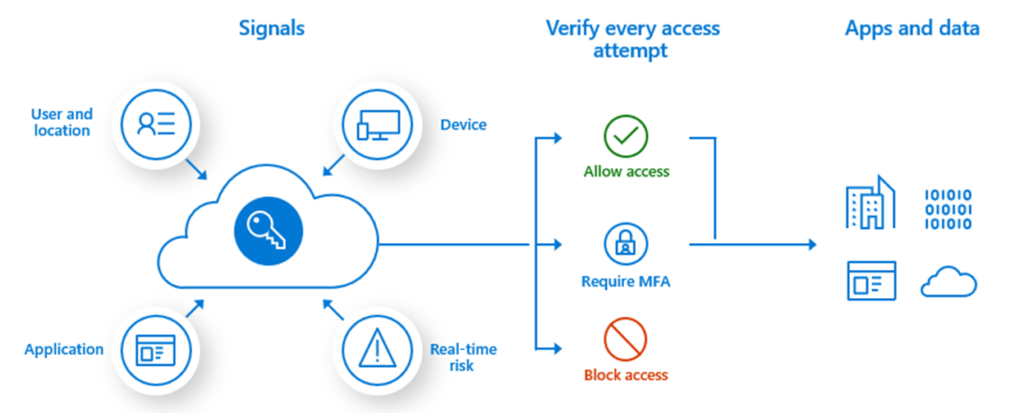/ Technologies

/
article
/
IT trend 2023 is cybersecurity. Start with the individuals accessing your infrastructure and implement two-factor authentication with Azure Active Directory.
If you follow IT trends, you've likely noticed that besides entrusting more and more everyday and complex tasks to artificial intelligence, cybersecurity has become a real “hot topic.” Although the term “trend” might sound superficial, this is one we fully support. Let’s take a look at cybersecurity from the ground up and the crucial role that two-factor authentication plays in it.
The increased focus on cybersecurity didn’t appear out of nowhere. It’s a direct reaction to the growing number of cyberattacks. We’ve had to start caring about online safety—ignoring it could endanger our privacy, property, sensitive data, and business future. While in the past, cyberattacks were often carried out by curious geeks experimenting for fun, today it’s mostly about data and money.

Benefits:
The growing need for cybersecurity at the business level is also a result of digitalization. Over the past few years, most companies—large and small—have undergone digital transformation, and this trend will continue. That’s why ensuring proper security is crucial. Security starts with individuals: you can secure your company infrastructure, but if each user doesn’t protect their access properly, your defenses are as full of holes as Swiss cheese.
Instruct your employees and anyone accessing your systems to create secure passwords—long enough, with a mix of different characters, and unique. Even the strongest password, however, needs a backup. Make two-factor authentication mandatory for logins within your company.
With multi-factor authentication, users of your network will need to confirm their identity with an additional action—such as approving a request in an authenticator app or entering a code from an SMS message. Don’t worry; this is nothing new for employees. It’s the same method most people already use for online banking.
Azure Active Directory two-factor authentication helps protect access to your data and applications, adding another layer of security. Within your organization, you can implement MFA with conditional access tailored to your specific needs. Never underestimate the role your employees play in your company’s cybersecurity. If even a few employees reuse their personal login credentials for corporate systems like ERP, streaming accounts, or online stores, it’s a recipe for trouble.
Prioritizing cybersecurity and implementing multi-factor authentication as a key step in securing company infrastructure can help organizations reduce the risk of cyberattacks and protect sensitive data and assets.
By introducing Azure Active Directory two-factor authentication, you eliminate the impact of weak or reused passwords. Because, let’s face it—no amount of training will convince every employee to create a strong password. Some will always stick to their favorites: pet names, birthdays, or children’s names.
The second “factor” in multi-factor authentication refers to something you have or something you are. Sounds mysterious, right? But it’s quite simple. “Something you have” includes devices like a mobile phone or hardware key, while “something you are” refers to biometric methods such as fingerprints or facial recognition.
With Azure Active Directory multi-factor authentication, you can use the following additional verification methods:
IT infrastructure security must be comprehensive. Start with individuals and build your defenses from there. Don’t build an unbreakable fortress on weak foundations. Want to learn more about Azure Active Directory? Contact our specialists.
Azure Active Directory multi-factor authentication keeps your corporate data secure!
/ Let’s talk – whether you already know what you need or just want to explore possibilities.

Office NL
Lange Viestraat 2 B, 3511 BK Utrecht
Netherlands
Blue Dynamic, B.V.
KVK: 30137532,
VAT: NL805557532B01

Office CZ
Prazska 239, 250 66 Prague
Czech Republic
Blue Dynamic, s.r.o.
IČO: 02339234
DIČ: CZ02339234